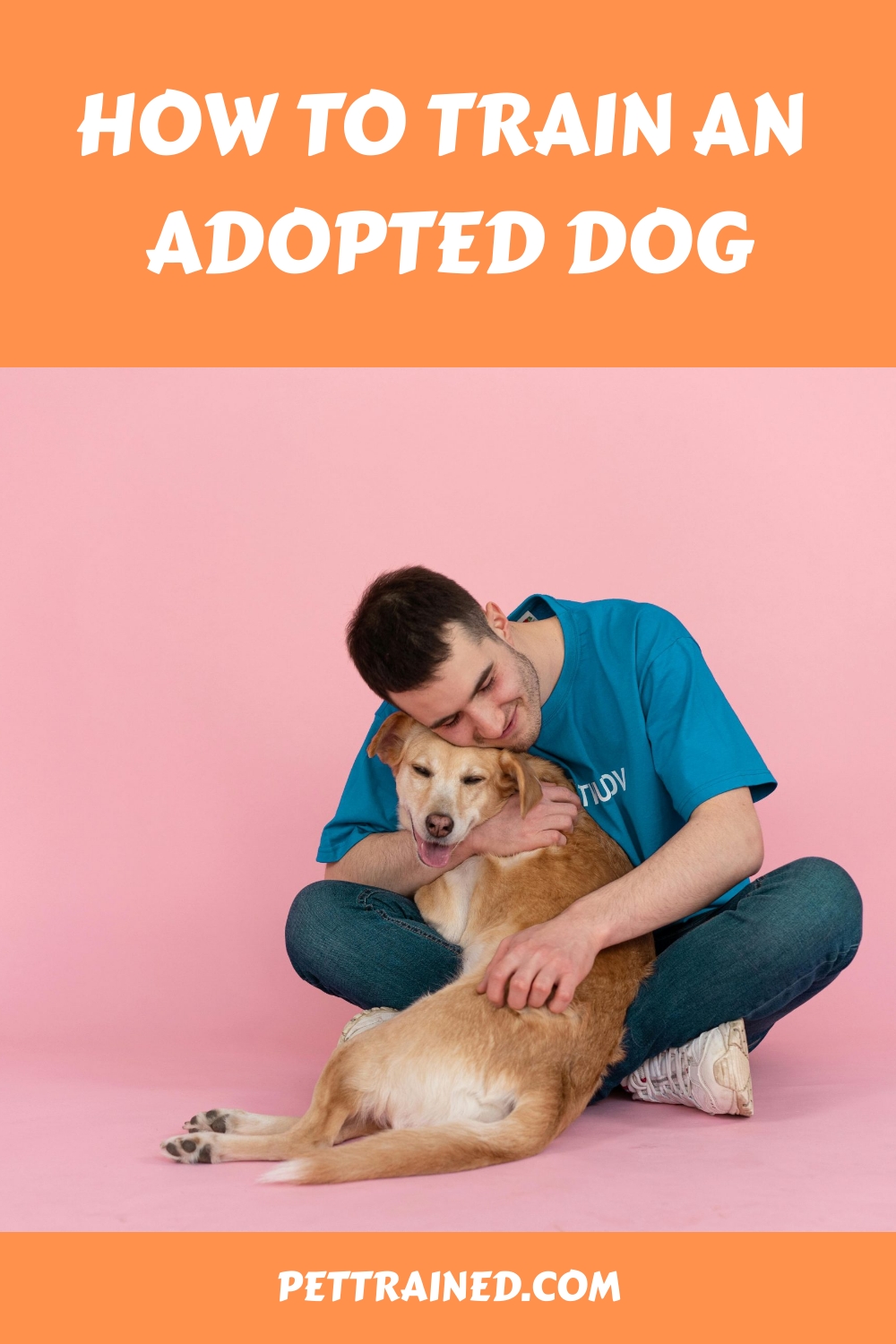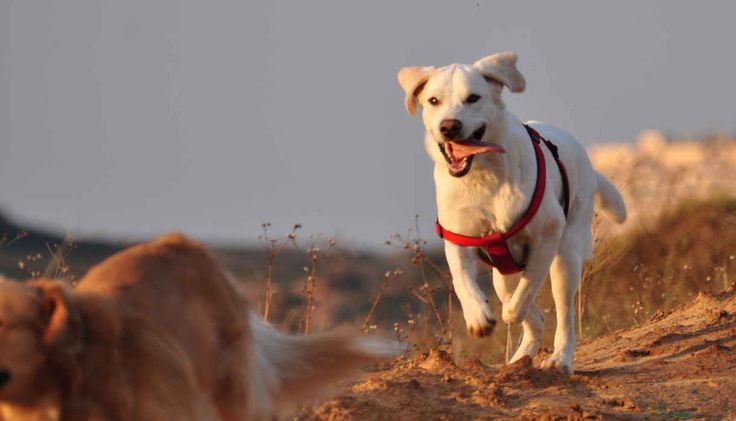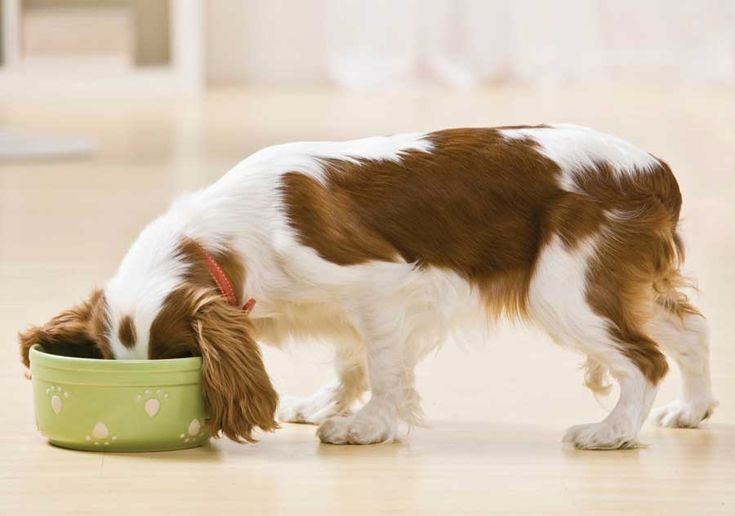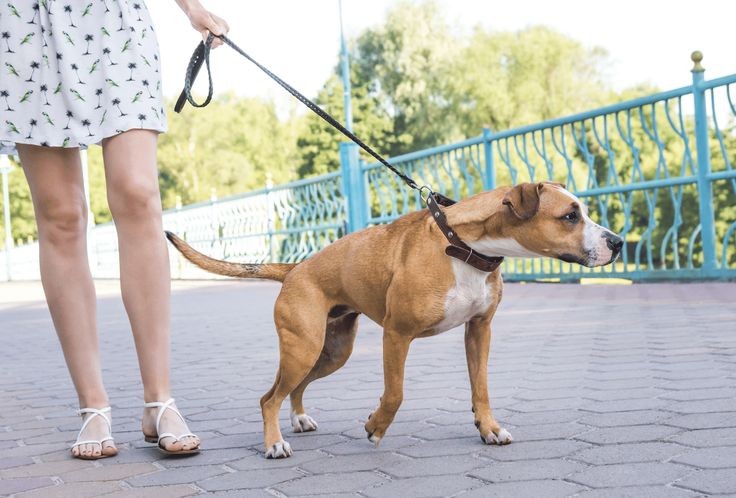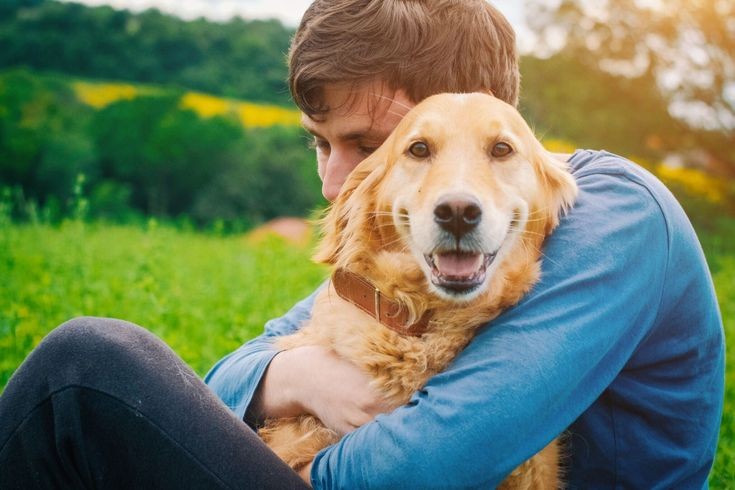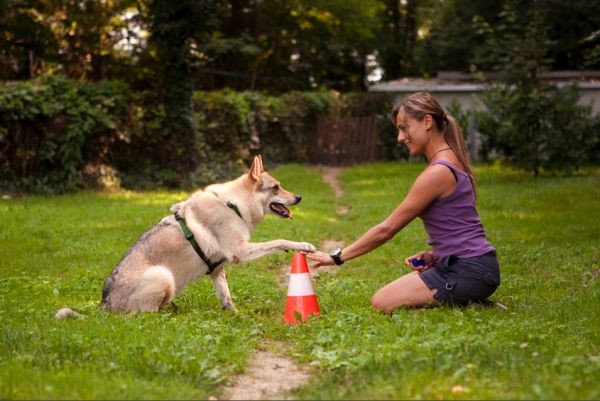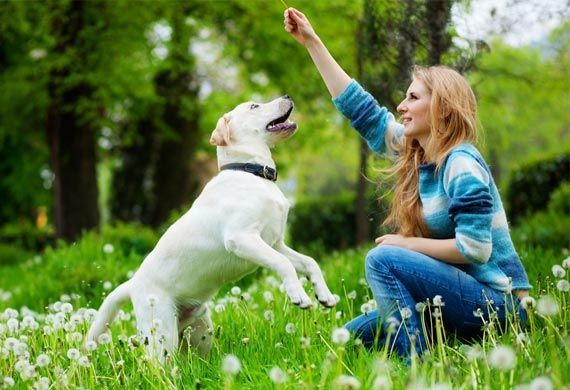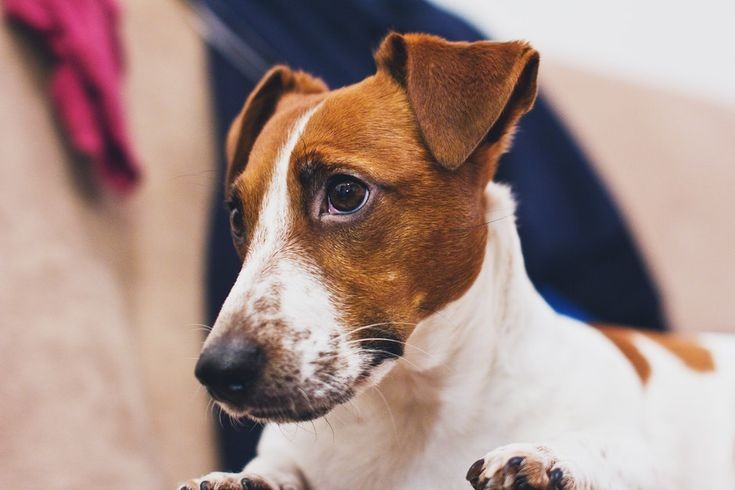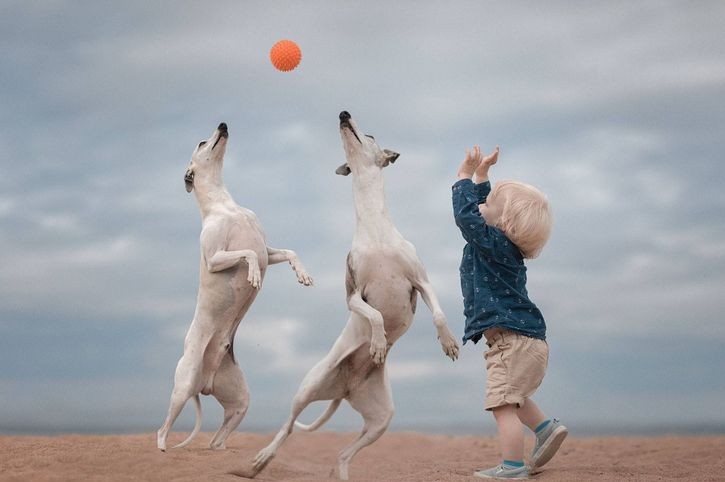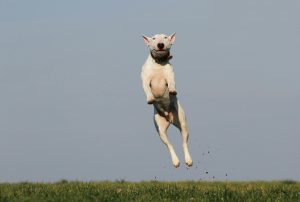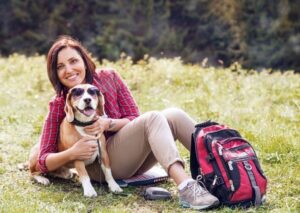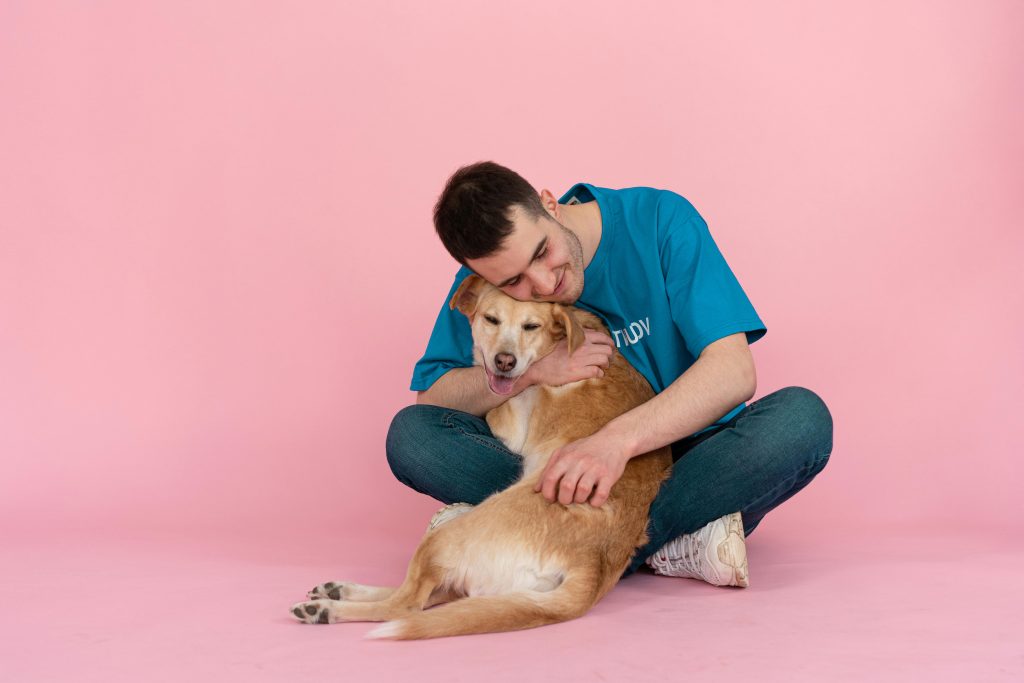
Training an adopted dog involves evaluating its background, establishing a consistent routine, and building trust through positive interactions. Start by gathering information on your dog’s history and breed-specific behaviors.
Maintain regular feeding and potty schedules to provide stability. Use positive reinforcement during bonding activities like play and training sessions. Socialize your dog in familiar environments before gradually introducing new settings.
Begin basic obedience training with simple commands and gradually address any behavioral issues using patience and consistency. Reward good behavior to encourage learning and trust.
Follow these steps to help your dog adapt and thrive. Explore further techniques for extensive training strategies.
Table of Contents
Key Takeaways
- Establish a consistent routine for feeding, potty breaks, and playtime to create stability and reduce anxiety.
- Use positive reinforcement, such as treats and praise, to encourage good behavior and build trust.
- Start with basic obedience commands like ‘sit,’ ‘stay,’ and ‘come’ to create a foundation for more advanced training.
- Socialize your dog gradually in familiar environments before introducing them to new settings and situations.
Assess Your Dog’s Background
Understanding your adopted dog’s background is crucial for creating an effective training plan. Start by assessing their history, gathering information about previous environments, experiences, and any known behavioral issues.
This post contains affiliate links. However all the information provided on this site are my own honest opinions. See more in Disclaimer.
This helps identify specific areas needing attention and customize your training approach.
Consider breed behavior insights, as different breeds have distinct traits and tendencies that influence training methods.
For example, herding breeds like Border Collies might require more mental stimulation, while hounds like Beagles could need focused recall training due to their strong scent drive.
Knowing these tendencies lets you anticipate and address potential challenges effectively.
Gather details from the adoption agency, previous owners, or veterinary records. Note any history of trauma or neglect, as these factors can affect your dog’s behavior and training responsiveness.
If your dog shows signs of fear or aggression, consulting a professional trainer or behaviorist can be invaluable.
Also See:
Establish a Routine
Establishing a routine is essential for your adopted dog’s sense of security and well-being.
Make certain you maintain a consistent feeding schedule and take them for regular potty breaks.
This consistency helps your dog adapt more quickly to their new environment.
Consistent Feeding Schedule
Maintaining a consistent feeding schedule is essential for your adopted dog’s health and well-being, fostering security and promoting good digestion.
Begin by setting specific meal times each day. Dogs thrive on routine, so feeding them at the same times daily will help them feel more secure and minimize anxiety.
Generally, feeding twice a day—once in the morning and once in the evening—works well for most dogs.
Portion control is equally significant. Overfeeding can lead to obesity and associated health issues, while underfeeding can cause malnutrition.
Consult your veterinarian to determine the appropriate portion size and type of food for your dog’s breed, age, weight, and activity level.
Once you have this information, measure their food accurately for each meal to ensure they receive the proper nutrients.
Be patient and consistent. If your dog is initially hesitant to eat, give them some time to adapt to the new routine.
Avoid feeding them table scraps or treats outside their scheduled meal times, as this can disrupt their routine and appetite.
Stick to the schedule, and your dog will soon adapt, leading to a happier and healthier life.
Regular Potty Breaks
Establishing a consistent potty break routine for your adopted dog is crucial for effective house training and creating a predictable environment.
Begin by taking your dog outside first thing in the morning, after meals, and before bedtime. Consistency is key in potty training, so adhere to a schedule to help your dog understand when it’s time to go.
Observe for outdoor signals that indicate your dog needs a break. Signs like sniffing around, circling, or going to the door are cues that it’s time to head outside.
Immediately take your dog to the designated potty spot and wait for them to relieve themselves. Offer praise and a small treat once they’ve done their business to reinforce positive behavior.
Accidents will happen, especially in the beginning stages. If you catch your dog in the act, quickly but calmly interrupt them and take them outside to finish.
Clean any indoor accidents thoroughly to remove odors and prevent future incidents.
Patience and consistency are your best tools. Over time, your dog will learn to associate specific times and signals with potty breaks, making the process smoother for both of you.
Stick to the routine, and soon your dog will be a potty training pro.
Build Trust and Bonding
To build trust and bond with your adopted dog, start with consistent, positive interactions that make them feel safe and valued. Trust-building exercises and bonding activities are vital for establishing a strong relationship.
Here are three essential steps to help you build this foundation:
- Create a Routine: Consistency is key. Establishing a daily routine for feeding, walks, and playtime helps your dog know what to expect and feel secure. Predictable schedules reduce anxiety and build trust.
- Engage in Bonding Activities: Spend quality time together through activities like gentle grooming, interactive play, and training sessions. These interactions not only stimulate your dog’s mind but also reinforce your role as a caring, dependable companion.
- Use Positive Reinforcement: Always reward good behavior with treats, praise, or affection. Positive reinforcement encourages your dog to repeat desired behaviors while also associating you with positive experiences.
Socialization Techniques
To ensure your adopted dog becomes well-adjusted, start socialization early by exposing them to various environments, people, and other animals in a controlled, positive manner.
Trending in Dogs:
Begin with short playtime interactions in familiar areas, gradually introducing new settings to build your dog’s confidence.
Take them on walks in different neighborhoods, parks, and pet-friendly stores, ensuring each experience is positive.
Enroll your dog in group classes led by a qualified trainer. These classes provide a structured environment where your dog can interact with other dogs and people under professional supervision.
Group classes not only enhance social skills but also offer you valuable training tips.
When introducing your dog to new people, keep the encounters calm and rewarding. Have treats on hand to reinforce positive behavior. Encourage friends and family to approach slowly, allowing your dog to initiate contact.
For interactions with other animals, start with controlled environments like a friend’s backyard. Gradually move to more dynamic settings, such as dog parks, once your dog is comfortable. Always monitor these interactions closely.
Consistency and patience are key. With regular socialization, your dog will become more confident and less anxious, making them a happier and more enjoyable companion in the long run.
Basic Obedience Training
Start with teaching your adopted dog basic commands like ‘sit,’ ‘stay,’ and ‘come.’
Consistency in your approach and patience are essential for successful training.
Use positive reinforcement to encourage good behavior and build a strong foundation for more advanced skills.
Teaching Basic Commands
Teaching basic commands to your adopted dog is essential for fostering good behavior and ensuring effective communication.
Start with fundamental commands like ‘sit,’ ‘stay,’ and ‘come’ before advancing to more complex tricks.
Using the right training tools, such as treats, clickers, or training collars, can significantly expedite the learning process.
- ‘Sit’: Hold a treat close to your dog’s nose, then move your hand upward, allowing his head to follow the treat and causing his bottom to lower. Once he’s in a sitting position, say ‘sit,’ give him the treat, and offer praise.
- ‘Stay’: First, command your dog to ‘sit.’ Open your palm in front of you and say ‘stay.’ Take a few steps back. If he stays, reward him with a treat and praise. Gradually increase the distance and duration.
- ‘Come’: Attach a leash and collar. Get down to his level and say ‘come,’ gently pulling on the leash. When he comes to you, reward him with a treat and affection.
Consistency and Patience
Consistency and patience are critical factors in ensuring your adopted dog successfully learns and retains basic obedience commands.
You need to maintain a training mindset, which means being steady and persistent in your approach.
Start by setting clear behavioral expectations for your dog. Decide on specific commands and enforce them consistently.
For instance, if you use ‘sit’ for one behavior, don’t switch to ‘sit down’ later. Consistency helps avoid confusion.
Patience is essential. Your dog mightn’t grasp commands immediately, especially if they’ve had a turbulent past. Give them time to understand and respond correctly.
Repeat commands calmly and reward positive responses with treats or praise. Avoid getting frustrated; this can create a stressful environment for your dog and hinder learning.
Additionally, keep training sessions short but frequent. Dogs have limited attention spans, so ten-minute sessions, multiple times a day, work best.
This reinforces learning without overwhelming your dog. Always end on a positive note, even if progress is slow.
Address Behavioral Issues
Identifying and addressing behavioral issues in your adopted dog is essential for creating a harmonious and loving home environment. First, observe any fearful behaviors and identify anxiety triggers.
These could be specific sounds, environments, or even people. Once you know what sets your dog off, you can create coping strategies to help mitigate these triggers.
Next, tackle training challenges such as resource guarding and leash reactivity. Resource guarding involves your dog being overly protective of food, toys, or even spaces.
Leash reactivity, on the other hand, manifests as aggressive or anxious behavior when your dog is on a leash. Both issues require patience and consistent training.
Lastly, address separation anxiety and aggression issues. Dogs with separation anxiety may become destructive or vocal when left alone.
Aggression issues can present as growling, snapping, or biting. These behaviors can be concerning but are often manageable with the right approach.
Here’s a quick guide to help you:
- Fearful Behaviors: Identify anxiety triggers and create coping strategies.
- Training Challenges: Work on resource guarding and leash reactivity.
- Separation Anxiety and Aggression: Implement strategies to manage these issues effectively and compassionately.
Positive Reinforcement Strategies
To effectively address these behavioral issues, employing positive reinforcement strategies can make a world of difference in your dog’s training.
Start by understanding that positive reinforcement means rewarding your dog for good behavior rather than punishing them for bad behavior.
This method helps build trust and encourages your dog to repeat desired actions.
One effective technique is clicker training. A clicker is a small device that makes a distinct sound when pressed. Begin by associating the clicker sound with a reward, like a treat.
Every time your dog performs a desired behavior, click the device and immediately follow up with a reward. Over time, your dog will understand that the click signifies a reward is coming, reinforcing the behavior you want.
In addition to clicker training, establish a consistent reward system. Rewards don’t always have to be treats; they can include verbal praise, petting, or playtime.
Consistency is key. Confirm that everyone in your household follows the same reward system to avoid confusing your dog.
Patience and persistence are essential. Positive reinforcement, when applied consistently, helps your adopted dog feel secure and more willing to learn, making the training process smoother and more enjoyable for both of you.
Frequently Asked Questions
To make your home safe for your new dog, follow these dog proofing tips: secure loose wires, store harmful chemicals out of reach, and create safe spaces with comfy beds and toys. Consistently monitor and adjust as needed.
You might think any toy will do, but interactive toys and chew toys are best for your adopted dog. They keep your dog mentally stimulated and help prevent destructive behavior, ensuring a happier, well-adjusted pet.
Introduce your new dog to children by first understanding dog behavior. Use child safety tips: supervise interactions, teach kids gentle handling, and reward calm behavior. Gradually increase their time together to build trust and comfort.
When it comes to your dog’s diet, you can’t cut corners. Guarantee you meet their nutritional needs with high-quality food, and establish a consistent feeding schedule. Consult your vet for personalized advice tailored to your dog’s specific requirements.
You should take your adopted dog for veterinary checkups at least once a year. Follow the vet’s recommended vaccination schedule and address any health concerns promptly to guarantee your dog stays healthy and happy.
Conclusion
Think of training your adopted dog like tending to a garden. Just like a neglected plant can bloom with proper care, your dog will flourish with patience and consistency.
Remember the story of Max, a rescued pup who went from fearful to confident through trust and positive reinforcement.
With the right techniques, you can transform your dog’s life and build an unbreakable bond.
Stay patient, stay consistent, and watch your garden grow.
